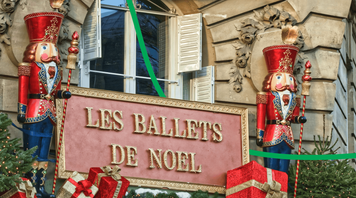
Madagascar 2025: Travel Tips & Must-See Attractions
- Madagascar attractions
- Madagascar wildlife
- Madagascar beaches
- Things to do in Madagascar
- Madagascar tour guide
- travel

Madagascar, the fourth-largest island in the world, is a one-of-a-kind place to visit full of wonders. Known for its unusual plants and animals, dramatic landscapes, and rich culture, Madagascar offers adventures you won’t find in other places. From ancient baobab trees to clear blue water along the coast, the island is perfect for travelers looking for something different. This guide highlights must-see attractions, wildlife encounters, and adventure activities that make Madagascar a bucket-list destination.
Madagascar Nature: Avenue of the Baobabs and the Tsingy Stone Forests

One of Madagascar’s most famous natural landmarks is the Avenue of the Baobabs, where giant trees line a wide dusty road. Another standout is Tsingy de Bemaraha National Park, known for its sharp limestone “stone forests.”
Why Visit: These landscapes are iconic and offer shots you just can’t get anywhere else.
Tips for Travelers:
Arrive early morning at the Avenue of the Baobabs to avoid crowds and catch the soft morning light.
For Tsingy, bring sturdy shoes, a helmet, and gloves; climbing narrow limestone peaks is part of the adventure.
Hire a certified local guide to discover hidden viewpoints and animal spots safely.
Madagascar Wildlife: Where to See Lemurs, Chameleons, and Local Species

Madagascar is a biodiversity hotspot. Over 90% of its wildlife includes species you can’t see anywhere else. You’ll spot lemurs—from tiny mouse lemurs to the loud, impressive indri—and chameleons with striking color changes.
Why Visit: Seeing these hard-to-find species in the wild is something you won’t forget.
Tips for Travelers:
Visit Andasibe-Mantadia National Park at dusk for the best chance to see nocturnal species.
Bring binoculars to spot lemurs high in the trees without disturbing them.
Avoid touching or feeding wildlife; use a zoom lens for safe photos.
Best Beaches in Madagascar: Nosy Be, Île Sainte-Marie & Hidden Island Spots
Beyond the forests and parks, Madagascar offers beautiful seaside spots. Nosy Be and Île Sainte-Marie are top choices for swimming, snorkeling, and relaxing.
Why Visit: Madagascar’s beaches offer peaceful escapes with fewer tourists and clear shorelines.
Tips for Travelers:
Take boat trips to Nosy Komba or Nosy Tanikely early for better visibility when spotting marine life.
Check tide charts for snorkeling; some reefs are only reachable at low tide.
Bring reef-safe sunscreen to protect coral and marine ecosystems.
Madagascar Culture Guide: Traditions, Local Life, and Authentic Experiences

Madagascar’s culture mixes African, Asian, and French influences. Explore traditional villages, busy markets, and ceremonies like the famadihana, or “turning of the bones.”
Why Visit: Connecting with local traditions adds depth to the trip beyond the natural sights.
Tips for Travelers:
Learn a few simple Malagasy phrases, like “Manao ahoana” (Hello), to connect with locals.
Always ask permission before photographing people, especially during ceremonies.
Visit between June and September if you hope to see a famadihana ceremony.
Madagascar Adventures: Best Hiking, Diving, and Wildlife Tours
For adventure seekers, Madagascar has plenty to offer. Hike through Isalo National Park, dive in Nosy Be’s reefs, or go on wildlife safaris.
Why Visit: Exploring Madagascar up close lets you enjoy its scenery, wildlife, and outdoor adventures.
Tips for Travelers:
On Isalo hikes, pack lightweight boots, sun protection, and at least 2 liters of water. Trails often take 5–6 hours.
Book full-day diving trips in Nosy Be to reach reefs with turtles and reef sharks.
Rent a 4x4 if you plan to explore remote southern or western areas; many roads are unpaved.
Madagascar’s Flora and Plant Life
Madagascar’s plant life is just as remarkable. Look for the traveler’s palm, orchids, and local medicinal plants in parks and reserves.
Why Visit: Nature lovers and photographers will find plenty to enjoy among the island’s unusual species.
Tips for Travelers:
Contact a local guide to help identify species.
Visit Royal Hill of Ambohimanga or botanical reserves near Antananarivo to see local plants without long hikes.
Travel during the rainy season (Nov–Apr) for the most active flowering; pack waterproof gear.
Why Madagascar Should Be on Your Travel List
Madagascar offers far more than a tropical getaway—it’s a place filled with animals that don’t exist outside this region, dramatic landscapes, rich traditions, and memorable adventures. Whether you’re walking among baobabs, spotting lemurs, diving off small islands, or learning local customs, every part of the journey feels special. Madagascar is truly an island every traveler should see at least once.
Download FindGuide, the app that connects travelers with local guides all over the world, to make your Madagascar adventure even more unforgettable.
Top reads


5 Must-Do Christmas Experiences in London

Christmas in Tokyo: Best Places to Visit, What to Do, and How Japan Celebrates the Holiday

Stranger Things: Top 5 Filming Locations & Fun Facts About Them

Your Guide to Zootopia Real-World Locations






